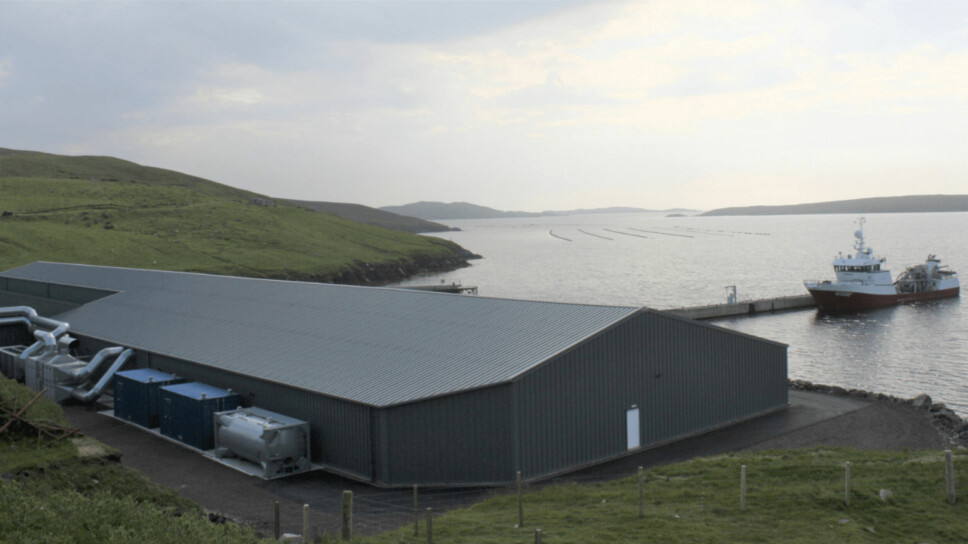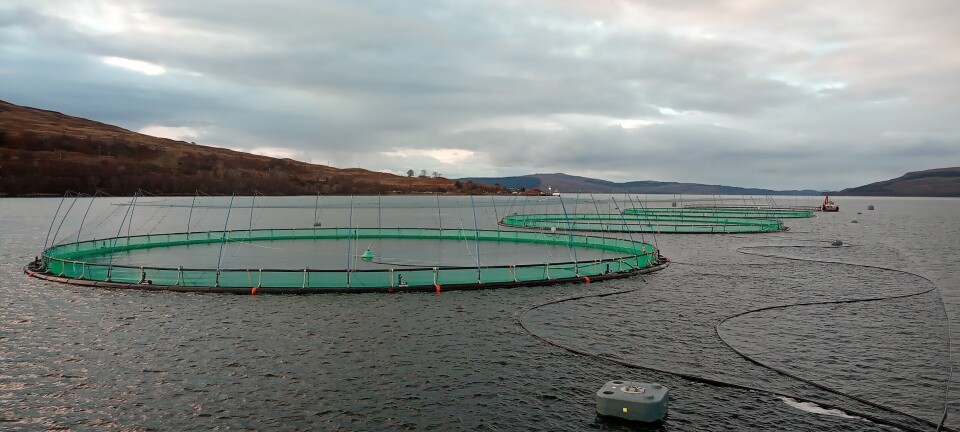
Salmon farmer prepares for £2m hatchery upgrade on Shetland
Wide range of improvements due for Girlsta facility as part of SSF strategy for more robust smolts
Scottish Sea Farms (SSF) is spending £2 million on its Girlsta hatchery in Shetland to improve biological performance and produce more robust smolts for improved survival at sea.
The move by Scotland’s second biggest salmon farmer follows multiple on-site assessments by recirculating aquaculture system (RAS) specialists by SSF and the company’s Norwegian co-owners, Lerøy and SalMar, and by external specialists.
Areas being upgraded include the drum filter and water quality, heater/chillers, generator capacity, pumps, ozone, and ventilation.
In preparation for the upgrade, SSF has been gradually de-stocking the hatchery since the summer ahead of the main works which will take place in the first quarter of next year.
£173m acquisition
SSF acquired the hatchery on December 15 last year when it spent £173 million to buy the assets of Grieg Seafood Hjaltland (Grieg Shetland), which also included salmon farm sites in Shetland and Skye, and a processing facility in Shetland.
Speaking ahead of the first anniversary of the deal, SSF managing director Jim Gallagher said the company had made solid progress towards its goal to develop Shetland into a high-performing farming region capable of rivalling any other on biology, quality, and cost efficiencies, “not just here in Scotland but globally”.

Gallagher told SSF’s newsletter, The Source, that the priority following the Grieg acquisition had been to blend the best of both companies’ cultures.
“Scottish Sea Farms’ philosophy has always been that responsibility of day-to-day farming, from fish health and feeding regimes to forecasting and budgeting, rests best with the farm teams themselves; a level of responsibility we’ve extended to our new farms, with clear targets and measures agreed,” said Gallagher.
“Equally, Grieg had a comprehensive environmental monitoring regime in place, which we’ve since adopted, along with more advanced farm infrastructure at some locations, the insights from which have helped inform our modernisation programme.”
Good harvest volumes
SSF’s enlarged Shetland region is ending its first year in profit and delivering good harvest volumes, but there are a growing number of challenges including biological performance, rising inflation on feed, utilities, fuel and other essentials, and the impacts of climate change, said Gallagher.
“So, there’s more need than ever to focus on what more we can do to create the best growing conditions, achieve the best biology out on farm and improve our cost base.”
As well as its investment in the Girlsta hatchery, SSF is spending £2 m to upgrade the former Grieg processing plant at Gremista, north of Lerwick. The plant, which has been closed for several months while work has been carried out, is due to re-open in Q1 2023.
A huge opportunity
“We have a huge opportunity ahead of us and to help ensure we achieve it we’ve involved every area of the business: Shetland colleagues old and new, teams from around our other regions, trusted suppliers, parent companies,” Gallagher told The Source.
He said there was a lot more work to be done as SSF builds and refines its roadmap for success.
“For now, though, as we celebrate the one-year anniversary of the acquisition, it’s important that we take a moment to recognise how far we have come as we transition to one team with one consistent way of working, shaped by the best of both.”
























































